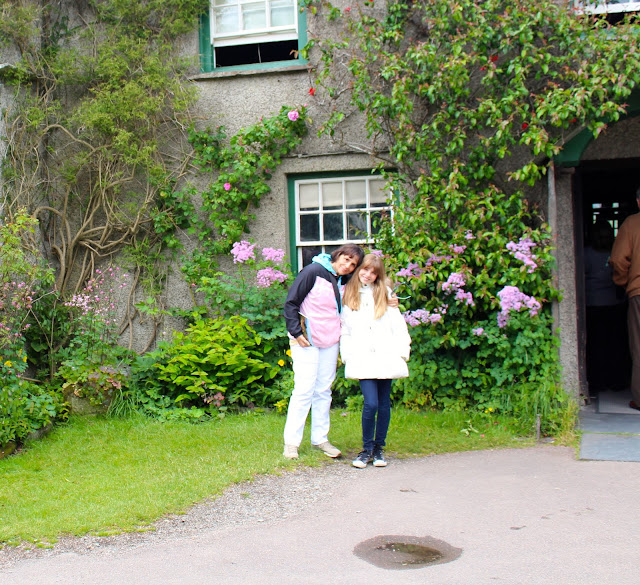We left London for Haworth, in Yorkshire, to visit the home town of the Bronte family, and to embark on what was to be one of the highlights of our trip. We wanted to experience the life and times of the famous 19th century authors of Jane Eyre and Wuthering Heights, Charlotte and Emily Bronte. What we discovered was a much bigger story about the family than just the two sisters.
We were met at the train station by Mark, the proprietor and owner of The Manor in Cullingworth. He and his wife Michelle made us feel like we were visiting friends. The comfort and luxury of their Bed and Breakfast has been the best on our trip. If you ever come to Haworth for a visit to the historic Bronte Parsonage you will want to stay at the Cullingworth Manor! You will also want to eat at "Your Local Village Pub" called "The George."
Their service is excellent, but get there early because it was packed both nights we were there!
The Manor Cullingworth is a Bronte-era home of 1838. Its wonderful accommodations, spectacular view from the bedroom window, and the "hearty Yorkshire breakfast menu," made our visit to Bronte country most enjoyable.
When we reached the Bronte Parsonage, we realized that the parsonage and the home where the Bronte's grew up were one and the same. The father, Patrick Bronte, and his wife, Maria, and their six children arrived in Haworth in 1820. Within a few months Maria died of cancer, leaving the father to raise six children. During the time Patrick served as parson and curate of Haworth the family experienced tremendous acclaim, only to be overshadowed by ongoing tragic and heart-breaking events. The two oldest daughters, Maria and Elizabeth, died soon after their mother of tuberculosis.
Alana, Stella, and Michaelin are standing on the front steps of the Bronte family home and parsonage. Charlotte occupied the bedroom at the two windows in the upper left-hand side of this photograph.
The room shown below is where the Bronte children congregated to act out their imaginary plays and stories. The table in the middle of the room is where Charlotte and Emily penned many of the pages of their most famous novels. The sofa on the right is where Emily passed away of tuberculosis at the age of 26. Charlotte's younger sister, Anne, died nine months later, also of tuberculosis. Charlotte was at her bedside in Scarborough, and had her buried there, sparing her pastor father from conducting another devastating family funeral.
The parsonage is located in the small village of Haworth, situated on a high hillside overlooking the moors, farms, pastures, and lakes in Yorkshire, England.
In a drizzling rain, and high winds that threatened to take our umbrellas, we walked six miles over the very paths through the moorlands and withens that once inspired the minds of Charlotte and Emily, influencing the intricate background and details found in their writings.
To add to the family's grief was the alcoholism of the only Bronte son, Branwell, who was a gifted painter and writer, too. He had an art studio in the parsonage, where his paintings are now exhibited. He expressed in a letter, shortly before he died, that he would welcome death because he would be "free of want." (Obviously referring to his addictions.) When Branwell could no longer function on his own, his father took him into his own bedroom to care for him, where he passed away at the age of 31.
Charlotte lived alone with her father until she finally accepted one of the many proposals for marriage. She and her husband took up residence in the parsonage and were anxiously awaiting their first child when Charlotte became ill. She died of tuberculosis in her family home with her husband praying at her bedside.
So it was that Patrick Bronte outlived his wife and his six children. Two years after Charlotte's passing, the Archbishop of Canterbury in his eulogy to Patrick Bronte, praised the 51 years of pastoral service to his community and the great devotion to his family. Sadly, the Brontes left no descendants - but thankfully their good works live on. :( Many storefronts, shops, and streets carry the Brontes' names and/or the names of their many artistic legacies.
We were completely surprised by the number of visitors, from all over the world, who acknowledge and come to learn more about, the Brontes and their accomplishments. The museum curator told us they have upwards of 100,000 visitors every year. The home and parsonage, which houses original furniture, letters, and works of all the Brontes is a tribute to the family's perseverance and triumphs over personal setbacks and tragedies. It is sure that none of them had any idea of the historic acclaim their contributions would merit.

























































